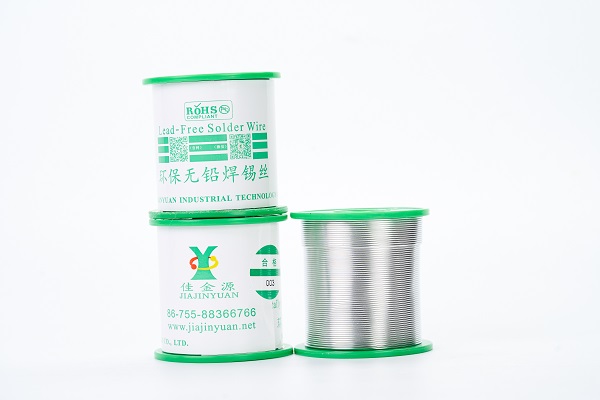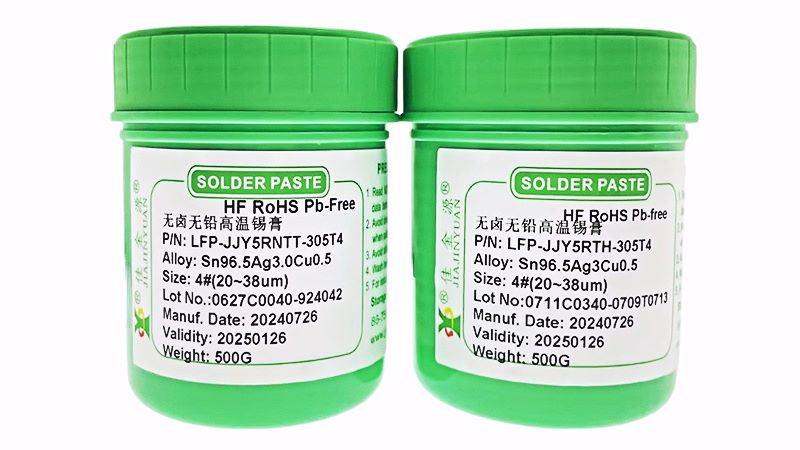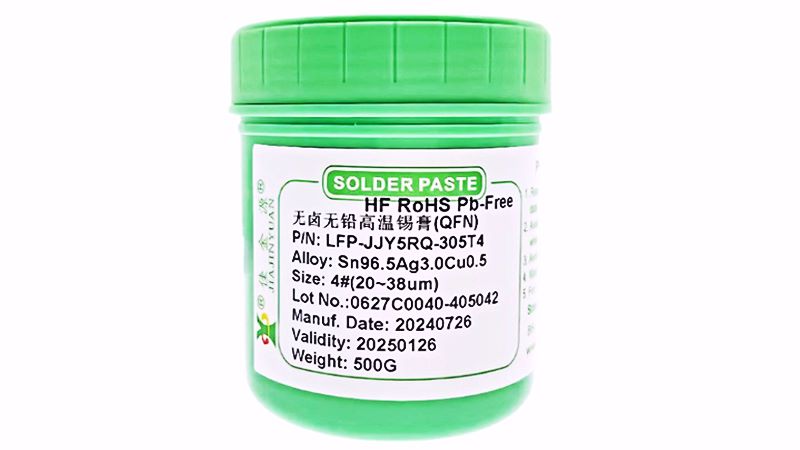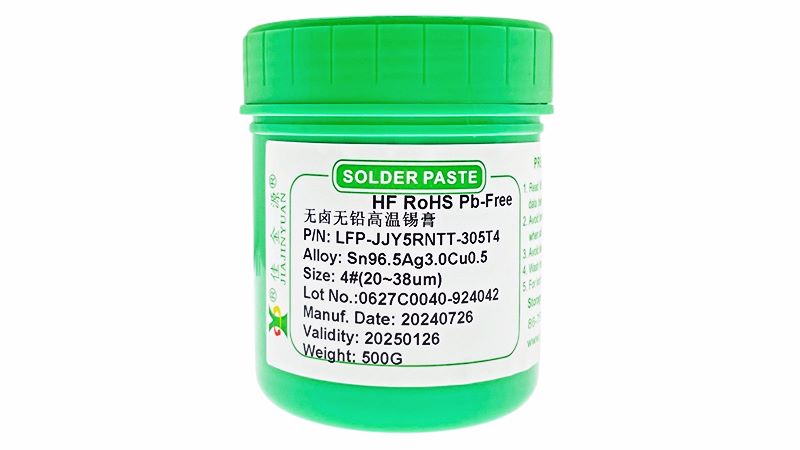People often encounter it in productionSolder wireSome problems may occur during soldering, which makes it increasingly difficult to handle them and leads to some undesirable conditions of the product. These issues are usually described as professional terms by others, and some people don't know what they mean. Now, the technicians from the solder paste manufacturer will explain them to you:

Tin leakage-It refers to electronic components and devicesPCBThe copper spots on the board surface do not adhere to tin during soldering. This situation might be caused by the uneven injection of flux into the solder wire, resulting in a missed injection. As a result, when the solder wire melts, the flux fails to play its role in assisting soldering. It could also be that the soldering iron tip is corroded by the additive, causing uneven heating temperature of the soldering iron tip and resulting in poor soldering.
Pull out the tip-It refers to the uneven surface and sharp tip of the solder spot after soldering. This might be due to the weak activity of the flux in the solder wire, which affects the wettability and expansion of the solder wire and thus leads to poor soldering. Another possibility is that the flux in the solder wire is too acidic, corroding the soldering iron tip and causing the solder spot to tip.
Crude tin-It refers to the rough and uneven surface of the tin points after welding. The reason for this situation is that there are too many impurities in the solder and the indicators containing other metals do not meet the production standards.
Tin Cave-It refers to a small hole on the surface of the solder spot after soldering. It might be byPCBThe humidity of the board was too high during the production process, and the temperature was too high during the soldering of the solder wire.
Build a bridge-It refers to the connection of two adjacent solder dots together after soldering. CheckPCBWhether the circuit design is qualified or not, in addition, the flux activity of the solder wire is not strong.
Soldering method of solder wire:
Prepare for welding
Hold the welding wire in one hand,Hold the soldering iron in one hand,Enter the standby welding state.
The soldering iron tip is required to be kept clean,No welding slag or other oxides,And a layer of solder is plated on the surface,It is convenient to transfer the temperature of the soldering iron tip to the pad and the object to be soldered.
Heated welded parts(Time1 s~ 2 s)
Lean the tip of the soldering iron against the connection of the two pieces to be soldered(The connection point between the solder pad and the component leads),Heat the welded parts.
Send in the tin wire
When the welding surface of the workpiece to be welded is heated to a certain temperature,The solder wire touches the workpiece to be soldered from the opposite side of the soldering iron. Attention:Don't send the solder wire to the tip of the soldering iron!
Remove the welding wire
When a certain amount of solder melts at the connection,Go up immediately45Remove the tin wire in the Angle direction.
Remove the soldering iron
After the solder has moistened the solder pad and the soldering area of the workpiece,Upward45Remove the soldering iron in the Angle direction.
The above is an explanation of the professional terms for everyone. You can take a look. Regarding this situation and the welding methods, everyone must learn to master them. Only in this way can there be a certain quality guarantee for production and welding. If you still have any questions, please feel free to consult!





 Tel:+86 0755 88366766
Tel:+86 0755 88366766 Phone:+86 18938660310
Phone:+86 18938660310 Email:sales@jjyhanxi.com
Email:sales@jjyhanxi.com Address:13/F,12/F, Building No. B,Qinghu Technology Park,Qingxiang Rd.,Qinghu Community, Longhua Subdistrict,Longhua District,Shenzhen City,GUANGDONG Province,P.R.C.(518027)
Address:13/F,12/F, Building No. B,Qinghu Technology Park,Qingxiang Rd.,Qinghu Community, Longhua Subdistrict,Longhua District,Shenzhen City,GUANGDONG Province,P.R.C.(518027) Guangdong Public Security Backup 44030902002666 name
Guangdong Public Security Backup 44030902002666 name
 WeChat
WeChat WeChat official account
WeChat official account
